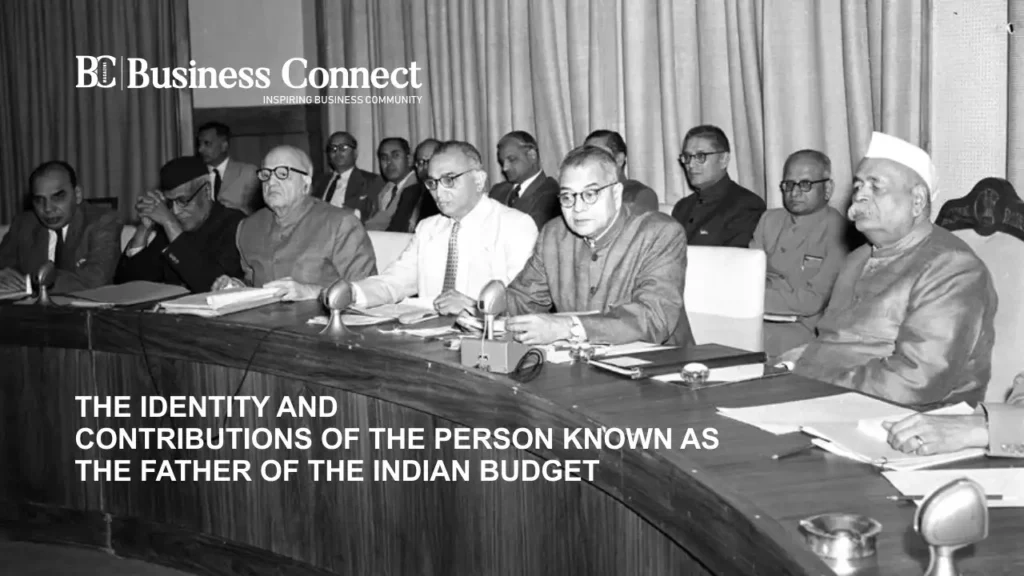By-Jaya Pathak
The father of the Indian budget- Prasanta Chandra Mahalanobis was born on 29th June 1893. He was an Indian scientist and statistician.
He was one of the members of the first Planning Commission of independent India. He founded the Indian Statistical Institute. He contributed to the design of large scale sample surveys. He is known as the father of statistics for his contribution.
The identity and contributions of the person known as the Father of the Indian Budget
Early life
He was born on 29th June, 1893 in Calcutta, Bengal Presidency, British India. He belonged to a prominent Bengali Brahmin family of landed gentry in Bikrampur, Dhaka, Bengal Presidency. He grew up in a socially active family surrounded by intellectual and reformers.
He completed his early schooling from Brahmo Boys School, Calcutta. Then he joined the Presidency College which was then affiliated to University of Calcutta. He then joined the University of London in 1913.
Contributions of Mahalanobis
- Mahalanobis distance- It is one of the most widely used metrics to find out the point of diversion from a distribution based on measurements in multiple dimensions. It is used in the field of cluster analysis and classification. In 1930, Mahalanobis proposed it in context of his study on racial likeness. At the Nagpur session of the Indian Science Congress 1920, Nelson Annandale asked him to analyse anthropometric measurements of Anglo-Indians in Calcutta. He used the data collected by Annandale and caste specific measurements made by Herbert Risley. His first scientific article was published in 1922. During the course of his research, he found a new method of comparing and grouping populations using a multivariate distance measure, which is denoted by D^2. This unit is called Mahalanobis distance.
- Sample survey – It is considered as one of the most important contributions of Mahalanobis. He introduced the concept of pilot surveys and advocated the usefulness of sampling methods. The service began between 1937 and 1944 which included topics such as consumer expenditure, thinking habits, public opinions, plant diseases and crop acreage. He introduced a method for estimating crop yields which involve statisticians sampling in the field by cutting crops in a circle of diameter 4 feet. P V Sukhatme and V G Panse worked on the crop surveys with the Indian Council of Agricultural Research and the Indian Agricultural Statistics Research Institute suggested that a survey system should make use of the existing administrative framework. The differences in opinion led to acrimony which resulted in little interaction between Mahalanobis and agricultural research in later years.
Later life
He became a member of the Planning Commission and contributed prominently to the newly independent five year plans starting from the second.. He emphasized industrialization on the basis of A2 sector model His model was employed in the second five year plan which worked towards the rapid industrialization of India and with his other colleagues in his institute, he played a decisive role in the development of statistical infrastructure in the country. He encouraged the project as he wanted to assess deindustrialization in India. He also corrected some previous census methodology errors and entrusted his project to Daniel Thorner.
He played a key role in the campaign to bring India’s first digital computers in 1950s. He served as a secretary to Rabindranath Tagore during the ladders for foreign travels and he also worked at his Vishwa Bharti university for some time.
He received the second highest civilian award of the nation, the Padma Vibhushan from the government of India for his contribution to science and services to the country.
During his last days he was discharging his duties as the secretary and director of the Indian statistical institute and as the honorary statistical advisor to the cabinet of the Government of India.
List of honours
Mahalanobis was honored with numerous awards and recognitions throughout his career, including:
- Fellow of the Indian Academy of Sciences (FASc, 1935)
- Fellow of the Indian National Science Academy (FNA, 1935)
- Officer of the Order of the British Empire (Civil Division), 1942 New Year Honours list
- Weldon Memorial Prize from the University of Oxford (1944)
- Fellow of the Royal Society, London (1945)
- President of the Indian Science Congress (1950)
- Fellow of the Econometric Society, US (1951)
- Fellow of the Pakistan Statistical Association (1952)
- Honorary Fellow of the Royal Statistical Society, UK (1954)
- Sir Deviprasad Sarvadhikari Gold Medal (1957)
- Foreign Member of the Academy of Sciences of the USSR (1958)
- Honorary Fellow of King’s College, Cambridge (1959)
- Fellow of the American Statistical Association (1961)
- Durgaprasad Khaitan Gold Medal (1961)
- Desikottam by Visva-Bharati University (1961)
- Padma Vibhushan (1968)
- Srinivasa Ramanujan Gold Medal (1968)
The Government of India, in 2006, decided to celebrate Prasanta Chandra Mahalanobis’s birthday, 29 June, every year as National Statistics Day of India.
On the occasion of his 125th birth anniversary, that is on 29th June 2018, the vice president of our nation Venkaiah Naidu released a coin at the Indian Statistical Institute, Kolkata.



